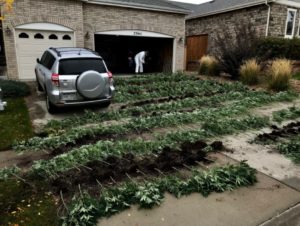Most home buyers tend to focus on what they can see: bright, open spaces, attractive finishes and a nicely landscaped yard. But a home’s striking appearance could be concealing the damage of a former marijuana grow op.
The signs can be tough to spot. With so much at stake, take advantage of the experience and knowledge of a broker or salesperson registered with the Real Estate Council of Ontario (RECO). Brokers and salespersons are obligated to disclose any material fact about a property that they are aware of that could affect a person’s decision to buy, including if the home is a former grow op.
When houses are used for a grow op they undergo significant renovations that require extensive repairs to correct. But too often they only receive cosmetic alterations to hide the damage before they’re put up for sale.
Even for a real estate professional, grow ops can be hard to spot after an operation has been dismantled, particularly if the house’s illicit history is several buyers in the past. Mould can be especially difficult to detect.
That’s why an independent home inspection is the best way to determine if a home is a former grow op. A home inspector may be able to identify readily visible signs of former grow-op use; in addition, a professional engineer can identify possible structural damage, and an environmental consultant can identify the presence of toxic mould in the structure. A general contractor may be able to estimate the cost of necessary repairs to the structure and household systems.
To find a home inspector, consult with your broker or salesperson or a friend who has used one in the past. You can also refer to the websites of Canadian Association of Home & Property Inspectors and the Ontario Association of Home Inspectors.
While it’s best to get an independent inspection, here are some of the potential signs that a home may have been a former grow house:
- Mould in corners where the walls and ceilings meet
- Unusual number of roof vents or signs of roof vents
- Fresh paint on window frames to cover damage caused by high levels of humidity
- Evidence of tampering with the electric meter (damaged or broken seals) or the ground around it
- Painted concrete floors in the basement, with circular marks of where pots once were
- Evidence of windows and doors having been sealed
- Indications that landscaping has not been consistently maintained
- Unusual or modified wiring on the exterior of the house
- Brownish stains around the soffit that bleed down along the siding
- Concrete masonry patches, or alterations on the inside of the garage
- Patterns of screw holes on the walls
- Alteration of fire places
- Denting on front doors (from police ramming the door)
Identifying Potential Grow House Operators (Purchasers):
- Third party purchasers
- Questionable income sources
- No contract negotiation
- Offers to pay in large amounts of cash; multiple cash transactions
- Multiple down payments on behalf of one individual
- Secretiveness and no reasonable explanations
Identifying Potential Grow House Operators (Renters):
- Did the renter check out every room?
- Have references been provided and do they check out?
- Did the renter spend a lot of time viewing the breaker boxes, wiring and plumbing?
Contacts for More Information:
Click here to access the Federal Cannabis Act
Click here for access to the Ontario Provincial Cannabis Control Act 2017
Contact your local police department for more information or specific concerns
(Source: Compiled with information from the Canadian Real Estate Association and chrismathers inc.
crime and risk consulting)
If you suspect that a property is currently being used as a grow op, contact your local police department or call Crime Stoppers.


